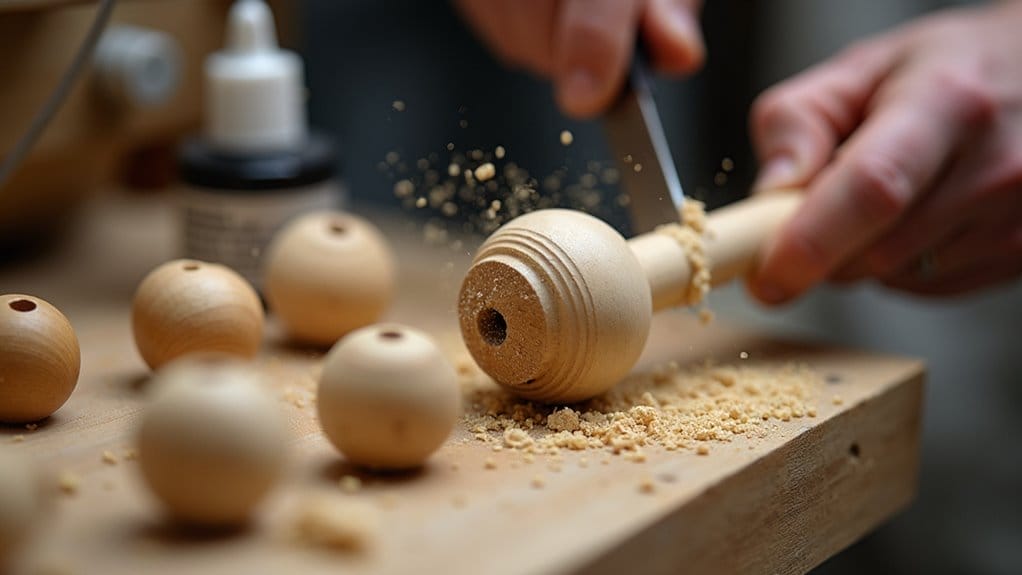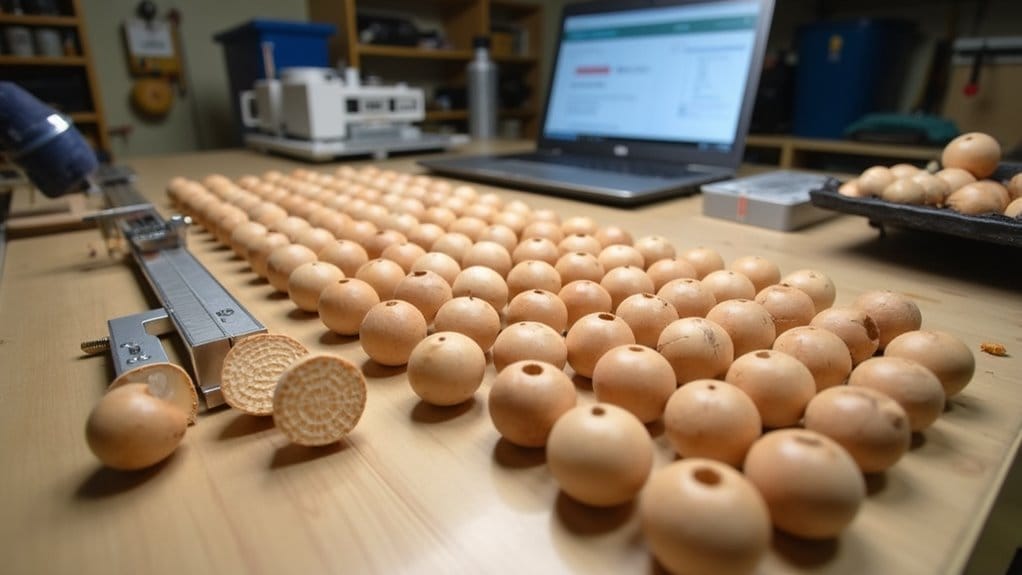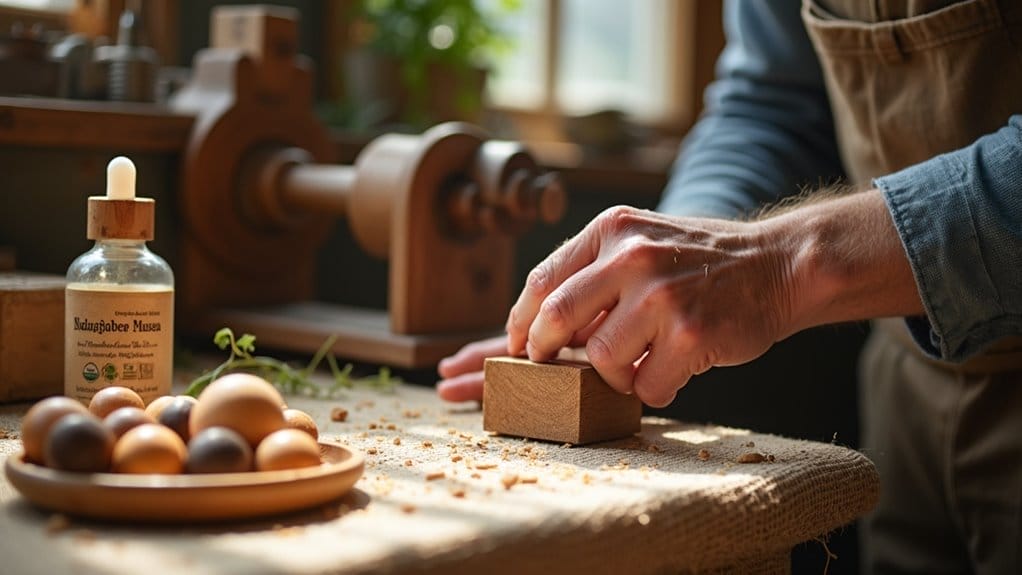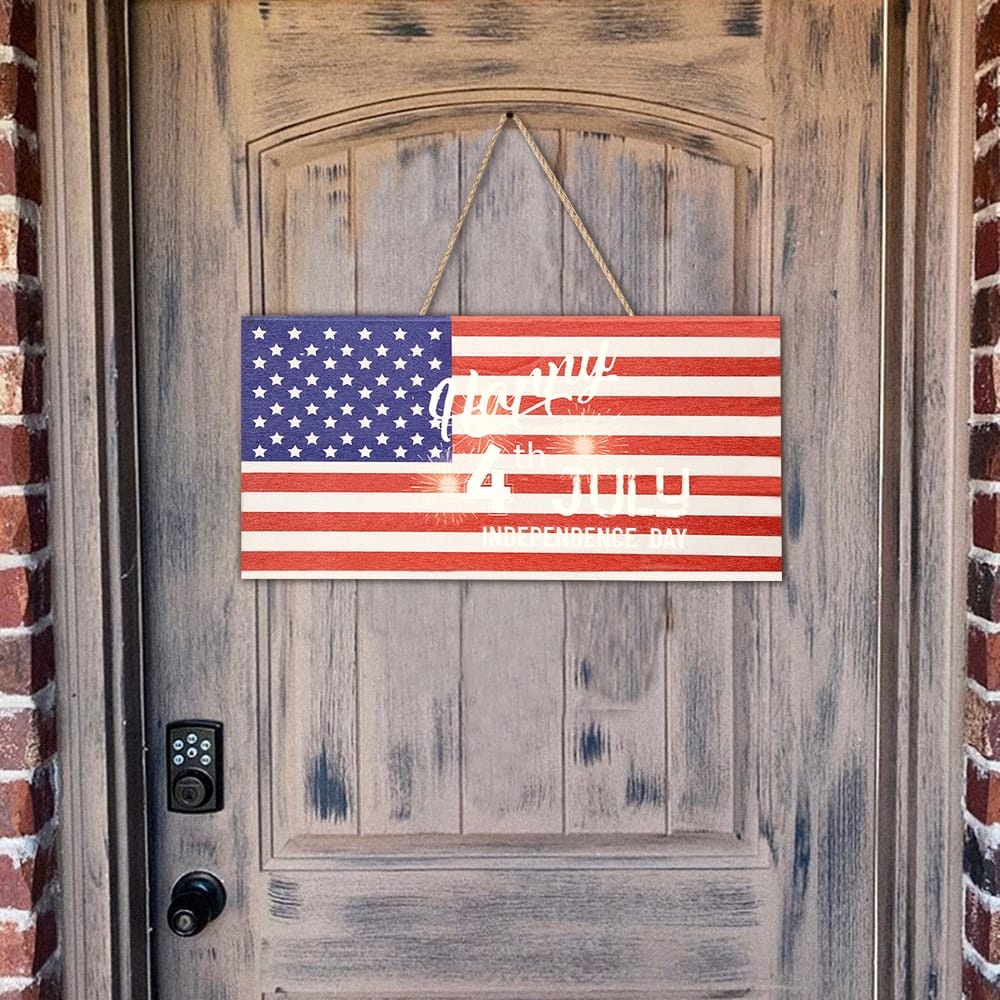We have observed the increasing popularity of wooden beads in home décor and jewelry. As a factory specializing in wooden crafts, primarily serving wholesale and custom orders, we craft our own wooden beads using basic woodworking tools and proven techniques.
By mastering how to make wooden beads, we not only save costs but also offer our customers unique, customizable wooden beads. Whether for bohemian wall hangings or distinctive jewelry designs, our approach ensures high quality and endless creative options.
Key Takeaways
- Cut hardwood into 1/2-inch square blocks, ensuring the wood is free from knots and defects.
- Shape blocks into round beads using 40-grit sandpaper, working consistently for about 30 minutes.
- Drill holes through the center using appropriate drill bits between 1/16 and 1/8 inch in size.
- Progress through finer sandpaper grits until achieving a smooth surface suitable for finishing.
- Apply mineral oil to enhance the wood’s natural beauty and create a polished, professional finish.
Material Selection: Sourcing the Right Wood for Quality Beads

When we craft wooden beads, we always start by selecting the right material. Our focus is on hardwoods such as maple, oak, or cherry. They allow us to produce beads with an excellent finish and durability. In addition to our choice of materials, we also pay close attention to the dimensions of our beads, offering a variety of styles to suit different projects. By providing wholesale wood bead size gradients, we enable crafters and artisans to choose the perfect sizes for their creations. This careful consideration ensures that each bead not only complements the design but also meets the highest standards of quality.
We carefully choose wood pieces that are free from knots and defects to ensure the beads maintain strong structural integrity.
To achieve consistent results, we cut the wood into uniform 1/2 inch square blocks. This uniformity helps our beads keep a consistent size and shape throughout the production process.
For customers seeking unique wood beads, we occasionally use plywood. It provides interesting patterns and color variations.
We also pay close attention to the moisture content of our wood. Using properly dried wood helps us prevent warping and cracking during crafting, ensuring high-quality finished products.
How to Make Wooden Beads: Step-by-Step Manufacturing Process

We start by cutting our selected wood into 1/2-inch square blocks. Then, carefully shape each block into a rounded form using 40-grit sandpaper.
Next, we drill precise holes through the center of each bead. This ensures the holes are clean and correctly sized to fit the intended threading material.
Finally, we sand the beads with progressively finer grits of sandpaper until they are smooth. To finish, we paint with mineral oil. It gives the beads an attractive, polished look while enhancing the natural beauty of the wood. For those looking to add a splash of color, learning how to dye wooden beads can be a fun and creative process. By using non-toxic dye and following specific techniques, you can achieve vibrant hues that complement the wood’s natural grain. This not only enhances the visual appeal but also allows for unique customization of each bead in your project.
Cutting and Shaping the Wood
We begin by selecting hardwood or plywood pieces and cutting them into approximately 1/2-inch squares to prepare for bead making.
To ensure precision during shaping, we secure the wood pieces in a specialized sanding box that prevents movement.
We start sanding with 40-grit sandpaper, working the pieces for about 30 minutes until they take on a noticeable rounded shape.
Then, we switch to finer grit sandpapers and continue shaping for another two hours to achieve a smooth, polished surface.
Drilling Precision Holes
After shaping and smoothing the beads, we proceed to drill precise holes for threading.
We start by marking the drilling points on each bead using a pencil or drill guide to ensure accuracy. We carefully select the drill bit size, usually between 1/16 and 1/8 inch. This depends on the threading material our customers require.
To maintain precision and safety, we secure each bead in a vice before drilling. We drill slowly and steadily to avoid splintering the wood. This ensures that every bead stays intact throughout the process.
Once drilled, we clear any wood shavings with a cocktail stick and test each hole with the threading material to confirm it fits perfectly.
Sanding for a Smooth Finish
After shaping the beads, we begin sanding with coarse 40-grit sandpaper to establish the basic form.
We spend about 30 minutes rounding each wooden bead until we see clear progress in shaping.
Next, we gradually move to finer grits, finishing with 120-grit sandpaper to achieve a polished surface.
The entire sanding process takes us around 2 to 2.5 hours to ensure the smoothest results.
For plywood beads, sanding is usually easier and requires less effort compared to hardwood.
We continue sanding until each bead has a silky smooth finish. This makes them ready for drilling and use in jewelry or other crafts.
Polishing and Finishing Options
After finishing the initial sanding, we switch to 120-grit sandpaper for the final polishing stage. This step ensures our beads have a high-quality, smooth finish. During polishing, we carefully check for any splinters or rough spots and address them promptly.
| Finish Type | Duration | Result |
|---|---|---|
| Basic Sanding | 1 hour | Smooth surface |
| Fine Polish | 1.5 hours | Refined texture |
| Mineral Oil | 30 mins | Rich appearance |
Once the beads reach the desired smoothness, we treat them with mineral oil. This treatment enhances the natural beauty of the wood, giving the beads a professional, polished appearance.
Quality Control: Ensuring Consistency in Bulk Orders

Since consistent quality is crucial for bulk wooden bead orders, we follow a systematic approach to quality control.
We begin by setting uniform size standards and use a detailed checklist to inspect surface smoothness and hole accuracy for every batch.
We test random samples from each production run to ensure our processes meet strict quality benchmarks.
We maintain detailed records of materials used and any adjustments made during the crafting process to identify and address any inconsistencies quickly.
Our team is thoroughly trained in quality assurance practices. We have a strong focus on precision and attention to detail to guarantee the best results for our customers.
Our Customization Services for Clients
Building on our robust quality control measures, we provide comprehensive customization services to our clients.
Our customization options include size, shape, and finish. This enables clients to tailor products to meet their brand’s specific needs perfectly.
We empower clients to create wooden beads that reflect their brand identity through customized dimensions, forms, and surface treatments.
Additionally, we offer a range of wood species and specialized dyeing options to help businesses create unique products that resonate with their target markets.
To ensure efficient production, we set clear minimum order quantities for our B2B services.
Our operations are designed to guarantee quick turnaround times and scalable production capacity, especially for clients requiring seasonal or promotional items.
Packaging and Logistics for Export

To ensure the successful export of our wooden beads, we pay close attention to packaging and logistics planning.
We securely pack our wooden beads in sturdy boxes using eco-friendly cushioning materials such as biodegradable packing peanuts or recycled paper to protect them from damage during transit.
Before shipping, we verify the import regulations for each destination country. Because some wooden materials may be subject to restrictions.
We collaborate with experienced logistics providers who are familiar with handling handcrafted items. This ensures every package is clearly labeled with product details and safety information.
We also utilize reliable tracking systems to monitor shipments and address any issues promptly. So we ensure a smooth delivery experience for our international customers.
Eco-Friendly Practices in Wooden Bead Production

We prioritize environmentally conscious practices to protect natural resources throughout our production of wooden beads.
We carefully select sustainably sourced materials, including fallen branches and fast-growing trees such as willow and poplar, to minimize our environmental impact.
Our finishes use non-toxic, natural dyes to ensure our products remain safe and eco-friendly for both makers and users.
Whenever possible, we incorporate reclaimed wood from local sources to minimize waste and promote the circular economy, thereby contributing to a more sustainable production process.
Final Words
We have shared the key steps of wooden bead production, from selecting premium hardwoods to the final polishing process. We emphasize strict quality control measures to ensure consistency and reliability in every batch. Offering customization options enables us to meet the diverse needs of our clients effectively.
Above all, we keep sustainability at the core of our operations as we continue to grow and serve the wooden bead market responsibly.
We provide a diverse range of wooden beads, available for bulk purchase and custom personalization. Reach out to us for details.
FAQs
How Are Wooden Beads Made?
We begin by cutting wood into small blocks of uniform size. Next, we drill holes through each block carefully to prepare them for threading. Then, we sand the pieces progressively using different grits of sandpaper to shape and smooth the beads. Finally, we apply mineral oil to polish the beads, enhancing their natural beauty and providing a lasting finish.
What Is the Best Wood for Carving Beads?
We prefer elder, cherry, and maple because they are softer hardwoods that make carving easier. Basswood and butternut are also good choices. We avoid dense woods like oak and hickory to ensure smooth carving.
What Is the Best Oil for Wooden Beads?
We use mineral oil because it’s non-toxic, food-safe, and penetrates wood well. For added durability and a richer finish, we also recommend tung oil as an option.
What String to Use for Wooden Beads?
For making wooden bead garlands or DIY jewelry, we recommend nylon or polyester thread for durability, elastic cord for bracelets, and waxed cotton for a natural look. Choose a string that fits comfortably through the bead holes to ensure easy threading. This tutorial helps you create beautiful decor with the right materials.






































